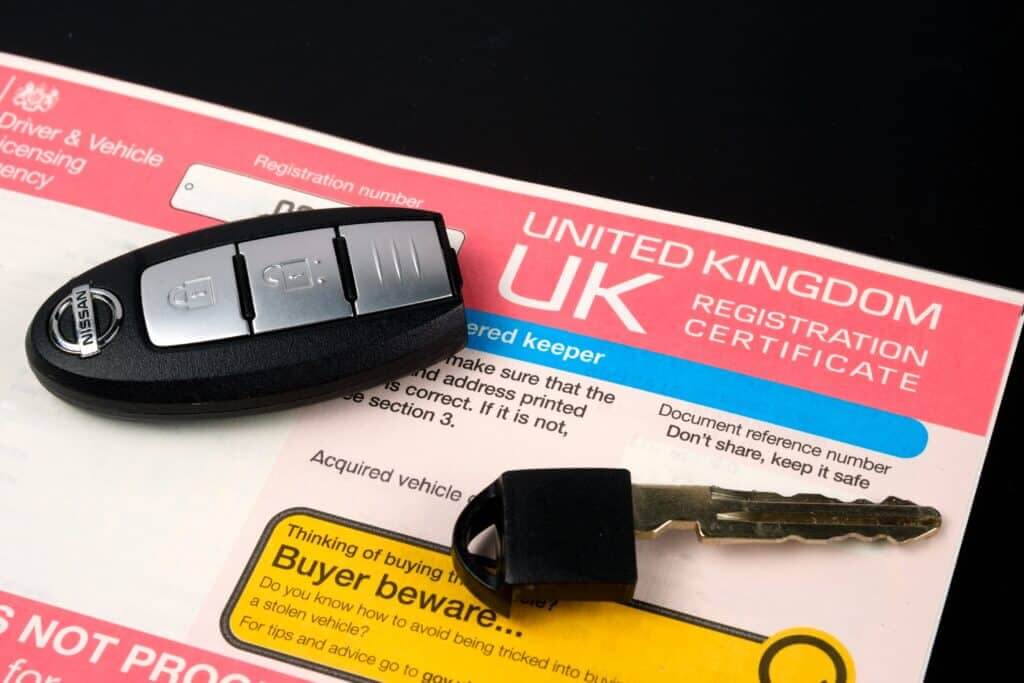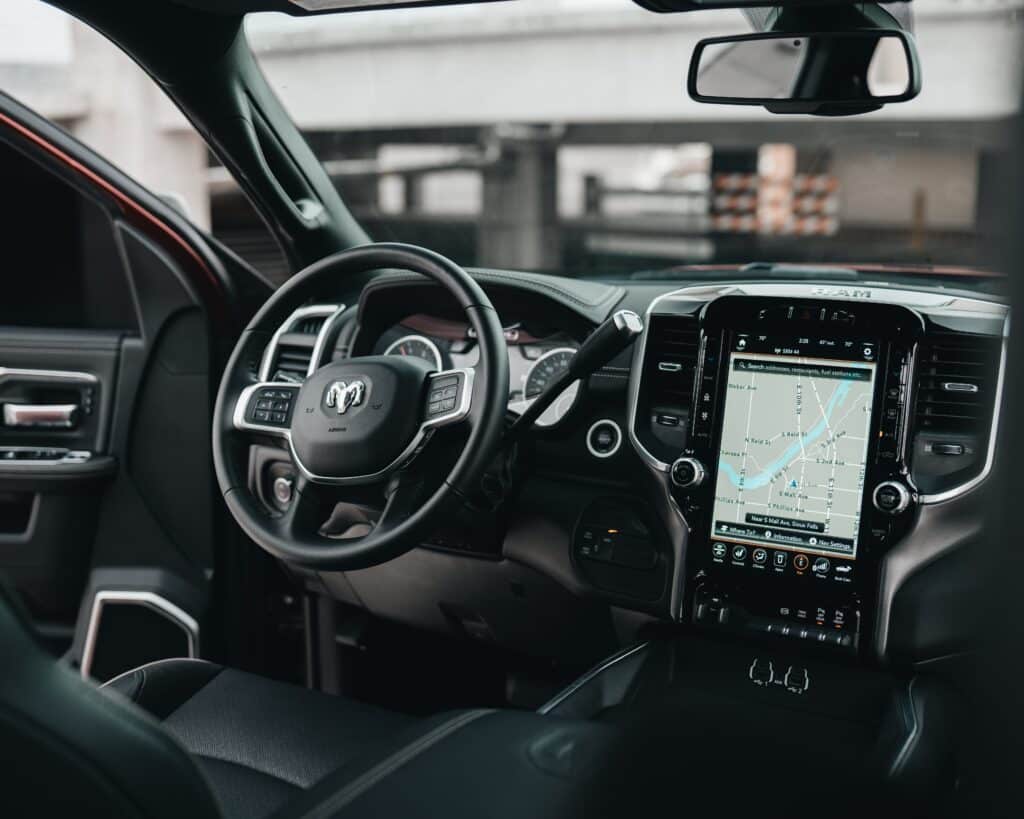At a glance
- Learn about the different information that makes up a VIN number and why it’s important
- VIN numbers are especially useful if you’re buying a used car – allowing you to find out who the owner is and if it’s ever been stolen or recalled, giving you peace of mind
- The VIN number is located in the engine bay and a couple of other places; learn where else it might be noted
- Discover the various tools you can use online to check a car’s VIN number
It’s a fact that all cars have a VIN number, which is the 17-digit identification number stamped into the chassis of your car (as well as a few other places). If you’re buying a used vehicle, it can be handy to check the VIN number on a car to make sure everything is legit.
So, what is the VIN number in a car, why do we have them, and how can you check a VIN number? In this article, we unpack all this and more.
Table of contents
- What is a Vehicle Identification Number or Chassis Number?
- VIN number, Chassis Number and engine number – what’s the difference?
- History of the VIN Number
- Why you should check your vehicle identification number
- When should you check a car’s vehicle identification number
- What do the number and letters in a VIN mean?
- How to read a car’s VIN Code?
- Where can you find the VIN or chassis number
- What if the VIN is not 17 characters long?
- What should you do if the VIN number on the car is different from the log book?
What is a Vehicle Identification Number (VIN) or Chassis Number?
A VIN number (Vehicle Identification Number) is your car’s unique identity code. It comes in the form of a 17-digit number stamped into the chassis of every car on the planet. The VIN number on a car contains information about the vehicle’s features, specifications and manufacturer. VIN numbers are unique to each car and cannot be changed – think of it as being a bit like a fingerprint. They’re given to the vehicle on the production line and are fixed to that car forever. This also means that there are no two cars with the same VIN.
VIN numbers are useful for a few reasons. If you’re buying or selling a used car, you can check the VIN number to authenticate a car’s identity and prove ownership. Besides that, VIN numbers help with tracking recalls, registrations, warranty claims, insurance coverage and reporting or investigating thefts (among other things).
VIN number, Chassis Number and engine number – What’s the difference?
Is the chassis number the same as the VIN number, and how does this relate to the engine number? Let’s untangle these questions.
Vehicle Identification Numbers (VIN) and Chassis Numbers are one and the same. The two terms are interchangeable and mean the same thing.
VIN numbers are sometimes called chassis numbers because the VIN number is always stamped on the chassis (the chassis is the base frame of the vehicle) and are often stamped on other parts of the car too, so they’re easier to find (and so you don’t have to crawl under the vehicle).
Car engine numbers are, however, another thing. They are not fixed to the car and, like other components, can be changed. But because the engine is such a vital part of a car they are also given a number to specify size and power output. Car engine numbers are useful when you need to replace your engine for a new one. Then the car will be assigned a new engine number. The VIN number, by contrast, will stay the same.
History of the VIN Number
Vehicle Identification Numbers as we know them today were introduced in 1980 by the International Organization for Standardization (ISO). This standard introduced a global system of 17-digit chassis numbers that are now applied to every single vehicle produced worldwide.
Before that, each individual carmaker had their own method of recording vehicle and component identities. The lack of a global standard meant it was relatively easy for crooks and fraudsters to create fake IDs and ownership documents for cars.
Why should you check your vehicle identification number?
You should always check the VIN number when buying a used car. This is for a variety of reasons:
- A VIN number check in the UK will reveal if the car has ever been stolen and who it belongs to
- It will also show you if the vehicle has been recalled (in which case, it’s not safe to drive and you shouldn’t buy it.)
- There should only be one VIN number on the car – if there is more than one, this could mean some kind of dodgy mechanics has been going on, such as welding two cars together.
When should you check a car’s vehicle identification number?
If you are buying a used car, you should always check the VIN number before making a purchase, especially when you buy from a private seller. There are various online tools for doing a VIN number check in the UK, including:
If you are selling a used car, it’s also useful to look up your car VIN number. You can share this with any possible buyers – it will put their minds at rest, and give them confidence you’re a legitimate seller.
What do the number and letters in a VIN mean?
Any car from 1981 to the present day will have a VIN number, while pre-1981 vehicles may have shorter identification numbers. So, what does a VIN number look like, how many digits is a VIN number, and what do the numbers mean?
VIN numbers are 17 characters long, and can include any digit from 0 to 9 and any letter of the alphabet except for I, O and Q (because they could be confused with numbers).
Understanding all the components on the VIN number is a little complex, because they are long and very specialised. It’s not something that’s crucial knowledge, still, if you’re curious, we’re going to break down the basics for you.
How to read a car’s VIN code?
Here’s what a VIN number on a car means:
Digits 1 to 3 – World Manufacturer Identifier (WMI)
The first three characters of the VIN number are the World Manufacturer Identifier section. They identify the manufacturer of a motor vehicle or trailer.
- The first character is for the country where the manufacturer or the company’s HQ is located.
- The second and third characters are assigned to different companies. For example, all UK manufacturer VIN numbers start with S. For example SAJ stands for Jaguar, SBM for McLaren or SAL for Land Rover.
Digits 4 to 9 – Vehicle Descriptor Section (VDS)
This is the part of the VIN Number that describes the general attributes of the vehicle – type of vehicle, platform, body style, engine option, etc.
If the manufacturer doesn’t use one or more of these spaces, they will be filled by letters or numbers that the car maker will choose.
Digits 10 to 17 – Vehicle Identifier Section (VIS)
The last section of the VIN Number has eight characters and the last four should always be numbers. These final digits identify a specific vehicle and are usually the car’s serial number, although they may include information on options or powertrain choices.

Where can I find the VIN or chassis number?
Knowing how to find a VIN number is fairly easy, and is a really good check to do when you’re buying a used car. So, where is the VIN number on a car?
Vehicle Identification Numbers can be found stamped in several parts of your car and they should always match. Remember, there is only one VIN number per vehicle.
On a modern car, the easiest place to spot your chassis number is at the base of the windscreen on the passenger side. It’s called ‘Visible VIN‘ and is easy to spot.
For extra security when you’re doing a car check, it’s good to look for the VIN number in other areas of the car. Depending on the age of the vehicle, it could be on a metal plate attached to the chassis or bodywork, or directly stamped into the metalwork.
Some manufacturers add the Vehicle Identification Number on the door post – where the door latches when it’s closed. In other cases, the VIN Number will be under the bonnet or behind plastic trim or carpets around the front doors of the car. Usually, handbooks reveal the location of these marks, but if you don’t have the handbook, checking in these places should do the trick.
VIN numbers are also featured on the car registration document. Just look in the Vehicle Details box at the top of page 2 on a car’s V5C doc (learn about used car paperwork here) – there you’ll find a field marked ‘VIN/Chassis/Frame No.’
What if the VIN is not 17 characters long?
Unless you’re checking the serial number of a classic car produced before 1981, all cars’ VIN numbers should have 17 alphanumeric characters. If the car was produced post-1981 and doesn’t have 17 characters in the VIN, then something’s wrong. Note that if an older car is UK-registered, you can figure out its year of manufacture from the number plate suffix or prefix – see our number plate guide for more info.
If the VIN number doesn’t seem to be 17 characters long (and you’ve double-checked), then you should contact the person who sold you the car. Alternatively, contact the DVLA. If you suspect foul play, talk to the police.
What should you do if the VIN number on the car is different from the logbook?
All VIN numbers on a car and in the logbook need to be identical. If you’ve checked the VIN number on a car, and any of the numbers don’t match up, this is a BIG red flag. Don’t buy the car – walk away and notify the police once you’re at a safe distance and in a secure place.
When the VIN numbers in a car are different, that could mean that you’re looking at a ‘cut and shut’ car. That is a car made from the parts of other vehicles (different bits welded together). Or, it could be a ‘clone’. This is where criminals will take the VIN number from one car and transfer it to another that was stolen in an attempt to hide the origin of the vehicle. They will usually have forged paperwork to help them mask the crime.
VIN numbers are designed to be foolproof and clear. If there are any inconsistencies, don’t trust the seller. To avoid this kind of ruse, read our car scams guide to learn about ‘gotchas’ and things to watch out for.
Knowing about the VIN number on a car – and spending a couple of minutes checking for it – can give you real peace of mind that your new vehicle is completely legitimate. And that means you can drive off safe in the knowledge that everything’s OK with your new car.



